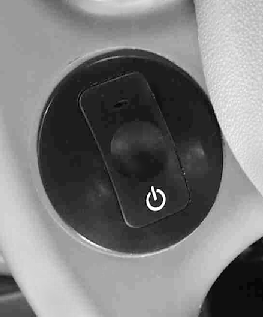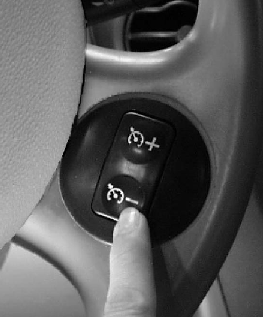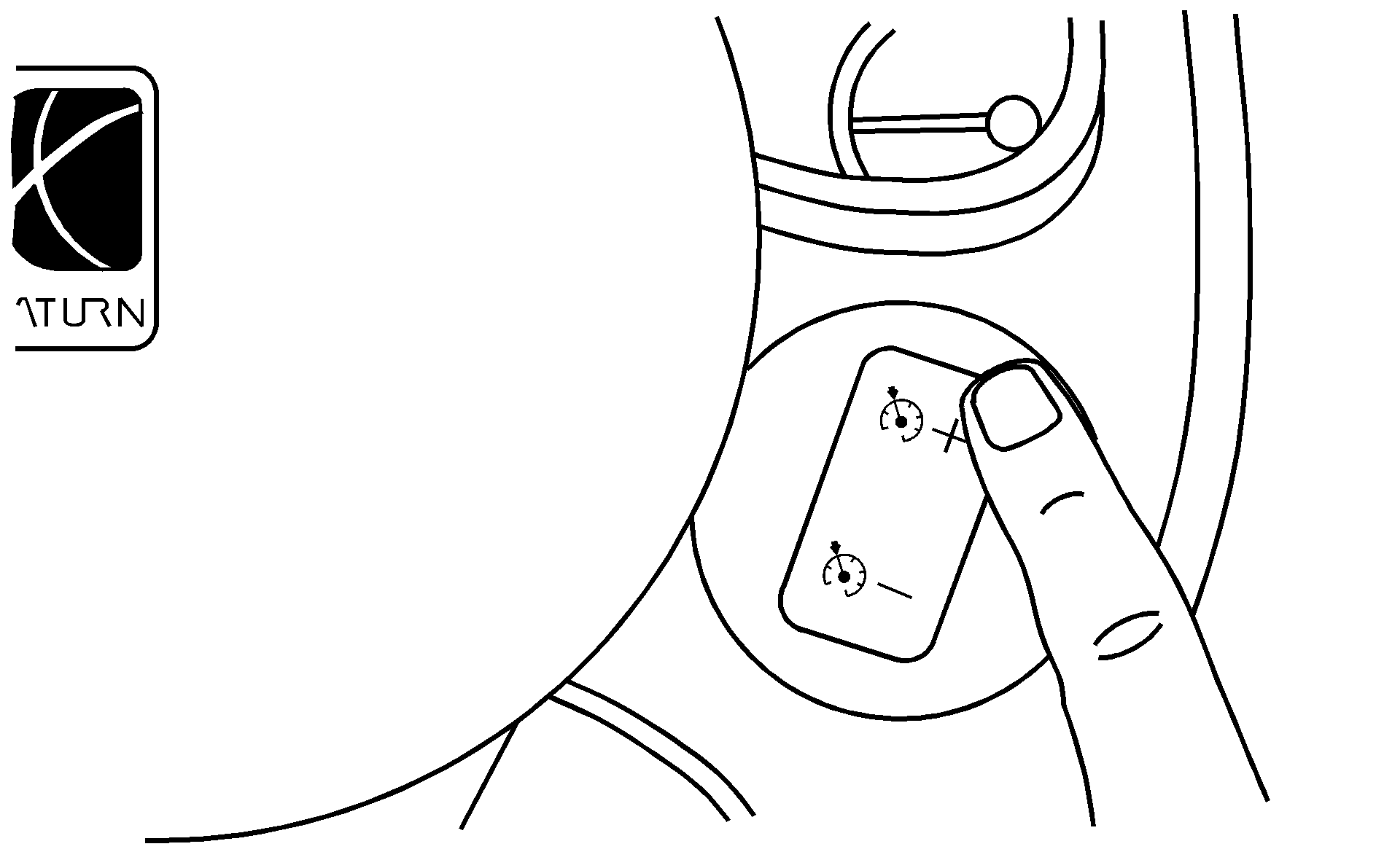
With cruise control, you can maintain a speed of about 22 mph (35 km/h) or more without keeping you foot on the accelerator. This can really help on long trips. Cruise control does not work at speeds below 22 mph (35 km/h).
When you apply your brakes or clutch, the cruise control shuts off. If the parking brake is applied while the vehicle is moving and in cruise control mode, the cruise control will disengage.
If your vehicle is in cruise control when the optional traction control system begins to limit wheel spin, the cruise control will automatically disengage. For more information see Traction Control System (TCS) .
When road conditions allow you to safely use it again, you may turn the cruise control back on by pressing the "RES/ACCEL" or "+" button.
The buttons for the cruise control are located on the steering wheel.
(On/Off): This button turns the system on and off.+ (Resume/Accelerate): Push this button to make the vehicle resume a previously set speed or to accelerate when cruise is already active.
- (Set/Coast): Press this button to set the speed or to decrease the speed when cruise is already active.
Caution: Cruise control can be dangerous where you cannot drive safely at a steady speed. So, do not use the cruise control on winding roads or in heavy traffic.
Cruise control can be dangerous on slippery roads. On such roads, fast changes in tire traction can cause excessive wheel slip, and you could lose control. Do not use cruise control on slippery roads.Setting Cruise Control

Caution: If you leave your cruise control on when you are not using cruise, you might hit a button and go into cruise when you do not want to. You could be startled and even lose control. Keep the cruise control switch off until you want to use cruise control.
- Press the cruise control ON/OFF button.
- Get up to the speed you want.
- Press the SET/COAST button.
- Take your foot off the accelerator pedal.

Resuming a Set Speed
Suppose you set your cruise control at a desired speed and then you apply the brake. This, of course, disengages the cruise control. But you don't need to reset it.

Once you're going about 22 mph (35 km/h) or more, you can press the cruise control "RES/ACCEL" button.
You'll go right back up to your chosen speed and stay there.
If you hold the "RES/ACCEL" button the vehicle will keep going faster until you release the button or apply the brake. So unless you want to go faster, don't hold the "RES/ACCEL" button.
Stop, Turn Off or Disengage Cruise Control
There are three way to turn off the cruise control:
- Step lightly on the brake pedal or push the clutch pedal, if you have a manual transmission (Note: If you depress the clutch pedal of your manual transmission you may experience a slight engine speed rise as the cruise control disengages.); or
- Push the cruise switch to "OFF"; or
- On five-speed automatic transmission, move the gear shifter into "N" (Neutral).
Increasing Speed While Using Cruise Control
There are three ways to go to a higher speed:
| • | Use the accelerator pedal to get to the higher speed. Press the set/coast button, then release the button and the accelerator pedal. You'll now cruise at the higher speed. |
| • | Press the resume/accelerate button. Hold it there until you get up to the speed you want, and then release the button. |
| • | To increase your speed in very small amounts, press the button briefly. Each time you do this, your vehicle will go about 1 mph (1.6 km/h) faster. |
Reducing Speed While Using Cruise Control
There are two ways to reduce your speed while using cruise control:
| • | Press set/coast button until you reach the lower speed you want, then release it. |
| • | To slow down in very small amounts, briefly press the set/coast button. Each time you do this, you'll go about 1 mph (1.6 km/h) slower. |
When you turn off the cruise control or the ignition, your cruise control memory is erased.
Passing Another Vehicle While Using Cruise Control
Use the accelerator pedal to increase your speed. When you take your foot off the pedal, your vehicle will slow down to the cruise control speed you set earlier.
Pushing the "RES/ACCEL" or "SET/COAST" buttons while at a higher speed will reset the cruise speed to the present higher speed. If the original set speed is desired, do not push the "RES/ACCEL" or "SET/COAST" buttons.
Using Cruise Control on Hills
How well your cruise control will work on hills depends upon your speed, load and the steepness of the hills. When going up steep hills, you may have to step on the accelerator pedal to maintain your speed. If you disengage your cruise control while driving up a hill, a pedal slap may be heard due to the quick release of the accelerator pedal.
When going downhill, you may have to brake or shift to a lower gear to keep your speed down. Applying the brake or shifting into a lower gear will take you out of cruise control. If you need to apply the brake or shift to a lower gear due to the grade of the downhill slope, you may not want to attempt to use your cruise control feature.
